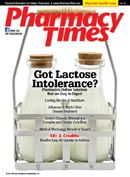Publication
Article
Pharmacy Times
Case Studies: Test Your Skills
Author(s):
Case One
HT is a 29-year-old woman with asthma.
Over the past 6 months, she has consistently refilled Advair 250/50 mcg with instructions to inhale 1 puff twice daily. Today, she comes to the pharmacy with a prescription for Flovent HFA 220 mcg with instructions to inhale 1 puff twice daily. She mentions that her asthma has been under good control for some time, and her doctor wanted to try a different inhaler that contained fewer medications. HT also states, “My doctor said she was concerned about continuing one of the medicines in Advair, because it can lead to more harm than good. She wanted to see if my asthma could be controlled without it.”
What is the recent safety concern associated with Advair use in patients with asthma?
Case Two
DF is a 32-year-old woman who began treatment for hepatitis C a few weeks ago.
Today, she comes to the pharmacy to pick up a refill of her therapies: Pegasys (peginterferon alfa-2a) prefilled syringe and Copegus (ribavirin) tablets. DF approaches the counter, and the pharmacy technician asks her if she has any questions for the pharmacist today regarding her prescriptions. DF states, “I do have a question. Each time I inject Pegasys, I feel awful. I feel achy all over like I am getting a cold. Sometimes I get the chills, and last week I even had a fever. Is there anything that I can do?”
What advice can the pharmacist give DF?
ANSWERS
Case 1: Answer: Case One Advair is a combination of the inhaled corticosteroid (ICS) fluticasone and the long-acting beta2- agonist (LABA) salmeterol, which has FDA approval for the treatment of asthma. In February 2010, the FDA announced new safety requirements for the use of LABAs in the treatment of asthma. Based on an analysis of 2 randomized controlled trials and an FDA-conducted meta-analysis, the FDA has concluded that the use of LABAs for the treatment of asthma increases the risk of severe exacerbation of asthma symptoms, hospitalizations, and death in some pediatric and adult patients. Therefore, the FDA has proposed label changes to LABAs contraindicating their use in asthma without concurrent controller medications, such as an ICS. Additionally, the FDA has suggested LABAs should be used for the shortest duration possible, considering long-term use only if a patient is not well controlled on asthma controller medications. Since HT’s asthma has been controlled for several months, it is appropriate to try step-down therapy. Thus, her therapy has been appropriately modified to monotherapy with an ICS in light of the FDA announcement.
Case 2: Answer: Case Two Pegylated interferon (peginterferon) alfa in combination with ribavirin is considered first-line treatment for hepatitis C virus (HCV) infection. Pegasys is 1 of 2 available peginterferon alfa products and is administered as a once-weekly subcutaneous injection of 180 mcg. Ribavirin is added to therapy to decrease the relapse rates, compared with peginterferon therapy alone, as well as to improve end-of-treatment response (undetectable virus at the end of treatment period). Duration of therapy varies based on the viral genotype or coinfection with HIV. Flu-like symptoms (muscle aches, joint pain, headaches, chills, fever) are one of the most common side effects of peginterferon treatment, reported in over 50% of patients during clinical trials. These symptoms usually occur 2 to 24 hours after the injection and lessen over time. The pharmacist may suggest DF take OTC acetaminophen or a nonsteroidal anti-inflammatory drug 30 minutes prior to her injection. Several nonpharmacologic strategies also may improve DF’s tolerance of the symptoms. DF should choose to inject Pegasys on a day of the week that is generally less busy for her and administer the injection at bedtime. DF should drink plenty of water to maintain hydration and consider avoiding loud noise, bright lights, and substances that may worsen her symptoms, such as alcohol, caffeine, tyramine, and phenylalanine-containing foods (eg, aged cheese, cured meats). If symptoms persist for more than 2 to 3 days, DF should contact her physician due to the potential effects of therapy on white blood cells and risk of infection.
function showAnswer() {document.getElementById("answer").style.display = 'block';document.getElementById("link").style.display = 'none';}
Dr. Coleman is an associate professor of pharmacy practice and director of the pharmacoeconomics and outcomes studies group at the University of Connecticut School of Pharmacy.







